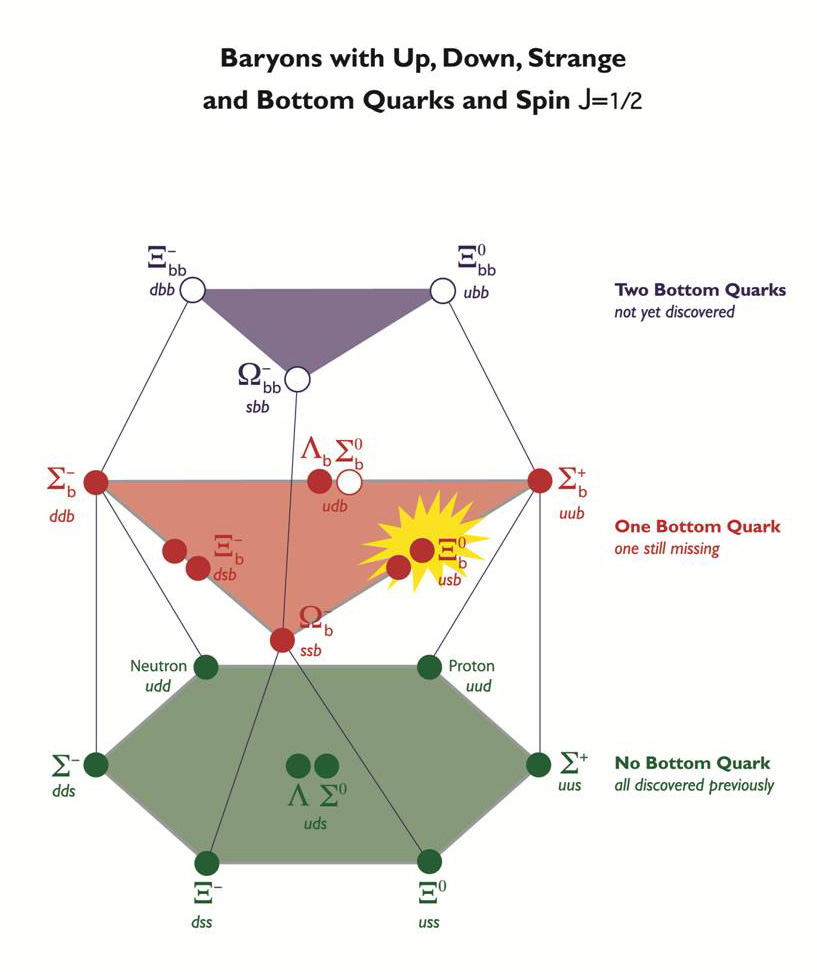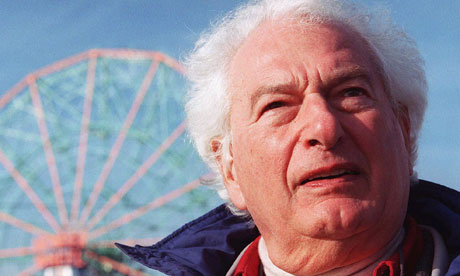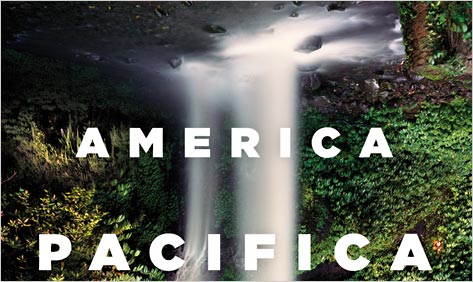A recent study by Tomohiro Ishizu and Semir Zeki from University College London places the seat of our sense of beauty in the medial orbitofrontal cortex (mOFC). Not very romantic of course, but thoroughly reasonable that this compound emotion would be found in an area of the brain linked with reward and pleasure.
[div class=attrib]The results are described over at Not Exactly Rocket Science / Discover:[end-div]
Tomohiro Ishizu and Semir Zeki from University College London watched the brains of 21 volunteers as they looked at 30 paintings and listened to 30 musical excerpts. All the while, they were lying inside an fMRI scanner, a machine that measures blood flow to different parts of the brain and shows which are most active. The recruits rated each piece as “beautiful”, “indifferent” or “ugly”.
The scans showed that one part of their brains lit up more strongly when they experienced beautiful images or music than when they experienced ugly or indifferent ones – the medial orbitofrontal cortex or mOFC.
Several studies have linked the mOFC to beauty, but this is a sizeable part of the brain with many roles. It’s also involved in our emotions, our feelings of reward and pleasure, and our ability to make decisions. Nonetheless, Ishizu and Zeki found that one specific area, which they call “field A1” consistently lit up when people experienced beauty.
The images and music were accompanied by changes in other parts of the brain as well, but only the mOFC reacted to beauty in both forms. And the more beautiful the volunteers found their experiences, the more active their mOFCs were. That is not to say that the buzz of neurons in this area produces feelings of beauty; merely that the two go hand-in-hand.
Clearly, this is a great start, and as brain scientists get their hands on ever improving fMRI technology and other brain science tools our understanding will only get sharper. However, what still remains very much a puzzle is “why does our sense of beauty exist”?
The researchers go on to explain their results, albeit tentatively:
Our proposal shifts the definition of beauty very much in favour of the perceiving subject and away from the characteristics of the apprehended object. Our definition… is also indifferent to what is art and what is not art. Almost anything can be considered to be art, but only creations whose experience has, as a correlate, activity in mOFC would fall into the classification of beautiful art… A painting by Francis Bacon may be executed in a painterly style and have great artistic merit but may not qualify as beautiful to a subject, because the experience of viewing it does not correlate with activity in his or her mOFC.
In proposing this the researchers certainly seem to have hit on the underlying “how” of beauty, and it’s reliably consistent, though the sample was not large enough to warrant statistical significance. However, the researchers conclude that “A beautiful thing is met with the same neural changes in the brain of a wealthy cultured connoisseur as in the brain of a poor, uneducated novice, as long as both of them find it beautiful.”
 But what of the “why” of beauty. Why is the perception of beauty socially and cognitively important and why did it evolve? After all, as Jonah Lehrer over at Wired questions:
But what of the “why” of beauty. Why is the perception of beauty socially and cognitively important and why did it evolve? After all, as Jonah Lehrer over at Wired questions:
But why does beauty exist? What’s the point of marveling at a Rembrandt self portrait or a Bach fugue? To paraphrase Auden, beauty makes nothing happen. Unlike our more primal indulgences, the pleasure of perceiving beauty doesn’t ensure that we consume calories or procreate. Rather, the only thing beauty guarantees is that we’ll stare for too long at some lovely looking thing. Museums are not exactly adaptive.
The answer to this question has stumped the research community for quite some time, and will undoubtedly continue to do so for some time to come. Several recent cognitive research studies hint at possible answers related to reinforcement for curious and inquisitive behavior, reward for and feedback from anticipation responses, and pattern seeking behavior.
[div class=attrib]More from Jonah Lehrer for Wired:[end-div]
What I like about this speculation is that it begins to explain why the feeling of beauty is useful. The aesthetic emotion might have begun as a cognitive signal telling us to keep on looking, because there is a pattern here that we can figure out it. In other words, it’s a sort of a metacognitive hunch, a response to complexity that isn’t incomprehensible. Although we can’t quite decipher this sensation – and it doesn’t matter if the sensation is a painting or a symphony – the beauty keeps us from looking away, tickling those dopaminergic neurons and dorsal hairs. Like curiosity, beauty is a motivational force, an emotional reaction not to the perfect or the complete, but to the imperfect and incomplete. We know just enough to know that we want to know more; there is something here, we just don’t what. That’s why we call it beautiful.
[div class=attrib]More from theSource here.[end-div]
[div class=attrib]Claude Monet, Water-Lily Pond and Weeping Willow. Image courtesy of Wikipedia / Creative Commons.[end-div]
[div class=attrib]First page of the manuscript of Bach’s lute suite in G Minor. Image courtesy of Wikipedia / Creative Commons.[end-div]

 Ushering in this week’s focus on the brain and the cognitive sciences is an Emily Dickinson poem.
Ushering in this week’s focus on the brain and the cognitive sciences is an Emily Dickinson poem.
 In early 1990 at CERN headquarters in Geneva, Switzerland,
In early 1990 at CERN headquarters in Geneva, Switzerland,  A fascinating and disturbing series of still photographs from Andris Feldmanis shows us what the television “sees” as its viewers glare seemingly mindlessly at the box. As Feldmanis describes,
A fascinating and disturbing series of still photographs from Andris Feldmanis shows us what the television “sees” as its viewers glare seemingly mindlessly at the box. As Feldmanis describes, More precisely NASA’s Dawn spacecraft entered into orbit around the asteroid Vesta on July 15, 2011. Vesta is the second largest of our solar system’s asteroids and is located in the asteroid belt between Mars and Jupiter.
More precisely NASA’s Dawn spacecraft entered into orbit around the asteroid Vesta on July 15, 2011. Vesta is the second largest of our solar system’s asteroids and is located in the asteroid belt between Mars and Jupiter. The Seven Sisters star cluster, also known as the Pleiades, consists of many, young, bright and hot stars. While the cluster contains hundreds of stars it is so named because only seven are typically visible to the naked eye. The Seven Sisters is visible from the northern hemisphere, and resides in the constellation Taurus.
The Seven Sisters star cluster, also known as the Pleiades, consists of many, young, bright and hot stars. While the cluster contains hundreds of stars it is so named because only seven are typically visible to the naked eye. The Seven Sisters is visible from the northern hemisphere, and resides in the constellation Taurus. Monday’s poem authored by William Meredith, was selected for it is in keeping with our
Monday’s poem authored by William Meredith, was selected for it is in keeping with our  [div class=attrib]From BigThink:[end-div]
[div class=attrib]From BigThink:[end-div]
 [div class=attrib]By Massimo Pigliucci at Rationally Speaking:[end-div]
[div class=attrib]By Massimo Pigliucci at Rationally Speaking:[end-div] [div class=attrib]From Ars Technica:[end-div]
[div class=attrib]From Ars Technica:[end-div] Remember the lowly tourist postcard? Undoubtedly, you will have sent one or two “Wish you where here!” missives to your parents or work colleagues while vacationing in the Caribbean or hiking in Austria. Or, you may still have some in a desk drawer. Remember, those that you never mailed because you had neither time or local currency to purchase a stamp. If not, someone in your extended family surely has a collection of old postcards with strangely saturated and slightly off-kilter colors, chronicling family travels to interesting and not-so-interesting places.
Remember the lowly tourist postcard? Undoubtedly, you will have sent one or two “Wish you where here!” missives to your parents or work colleagues while vacationing in the Caribbean or hiking in Austria. Or, you may still have some in a desk drawer. Remember, those that you never mailed because you had neither time or local currency to purchase a stamp. If not, someone in your extended family surely has a collection of old postcards with strangely saturated and slightly off-kilter colors, chronicling family travels to interesting and not-so-interesting places. [div class=attrib]From the New York Times:[end-div]
[div class=attrib]From the New York Times:[end-div]
 [div class=attrib]From the Guardian:[end-div]
[div class=attrib]From the Guardian:[end-div] The lives of 2 technological marvels came to a close this week. First, NASA officially concluded the space shuttle program with the
The lives of 2 technological marvels came to a close this week. First, NASA officially concluded the space shuttle program with the  [div class=attrib]From the Physics arXiv for Technology Review:[end-div]
[div class=attrib]From the Physics arXiv for Technology Review:[end-div] [div class=attrib]From Scientific American:[end-div]
[div class=attrib]From Scientific American:[end-div] [div class=attrib]From the Guardian:[end-div]
[div class=attrib]From the Guardian:[end-div] If you’ve traveled or lived in the UK then you may well have been filmed and recorded by one of Britain’s 4.2 million security cameras (and that’s the count as of 2009). That’s one per every 14 people.
If you’ve traveled or lived in the UK then you may well have been filmed and recorded by one of Britain’s 4.2 million security cameras (and that’s the count as of 2009). That’s one per every 14 people.
 Classic dystopian novels from the likes of
Classic dystopian novels from the likes of  [div class=attrib]From Wired:[end-div]
[div class=attrib]From Wired:[end-div] The infamous Dead Parrot Sketch from Monty Python’s Flying Circus continues to resonate several generations removed from its creators. One of the most treasured exchanges, between a shady pet shop owner and prospective customer included two immortal comedic words, “Beautiful plumage”, followed by the equally impressive retort, “The plumage don’t enter into it. It’s stone dead.”
The infamous Dead Parrot Sketch from Monty Python’s Flying Circus continues to resonate several generations removed from its creators. One of the most treasured exchanges, between a shady pet shop owner and prospective customer included two immortal comedic words, “Beautiful plumage”, followed by the equally impressive retort, “The plumage don’t enter into it. It’s stone dead.”